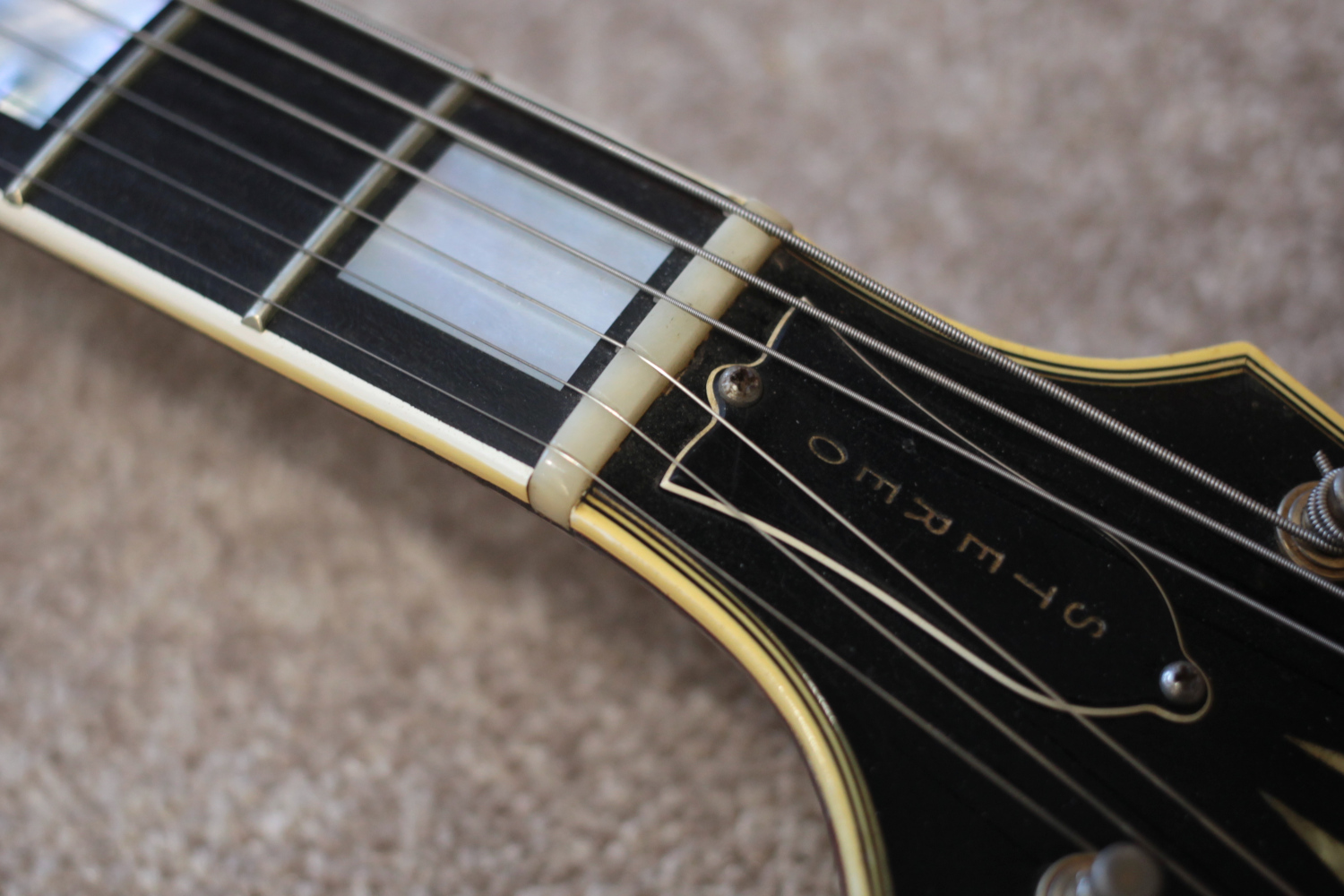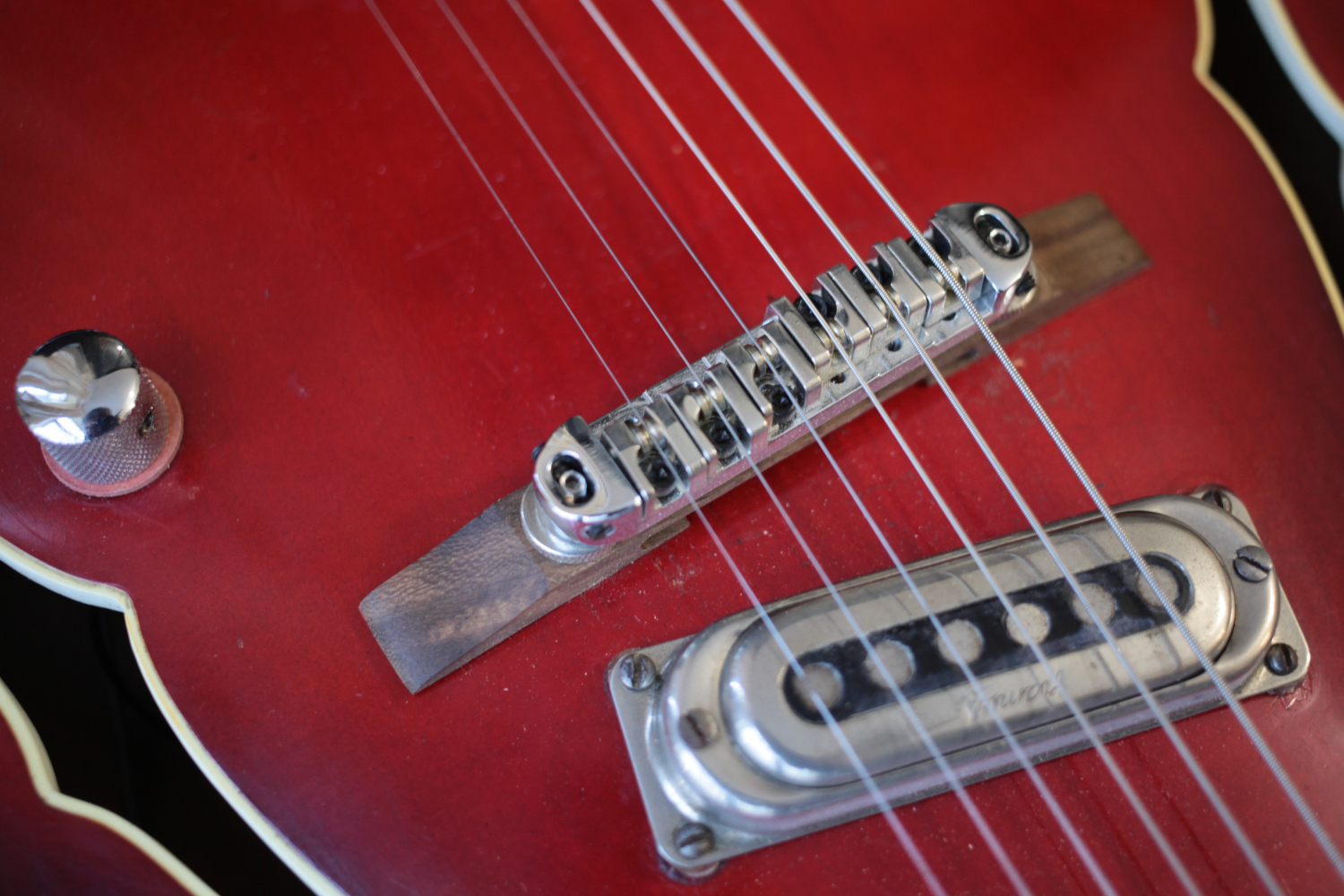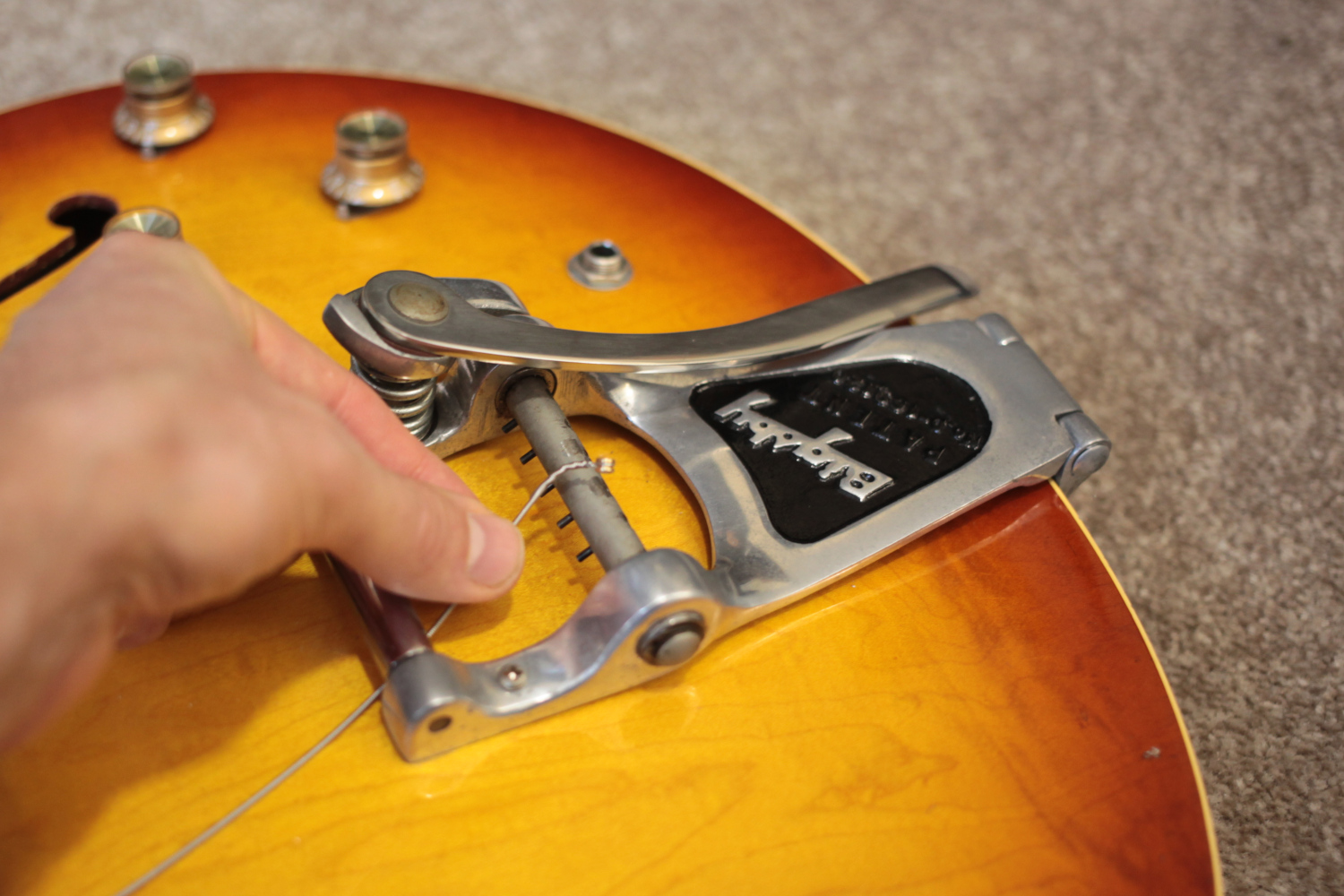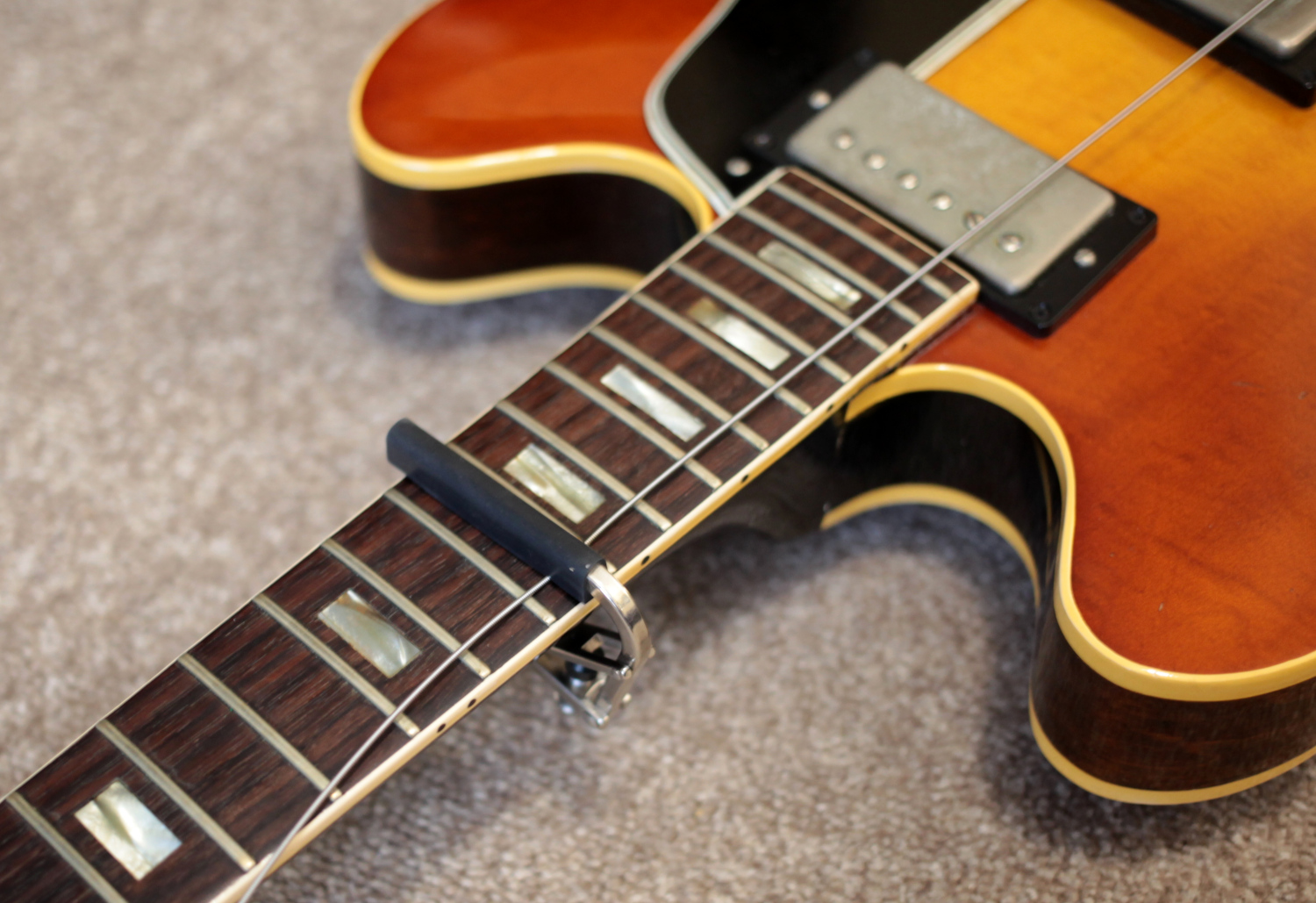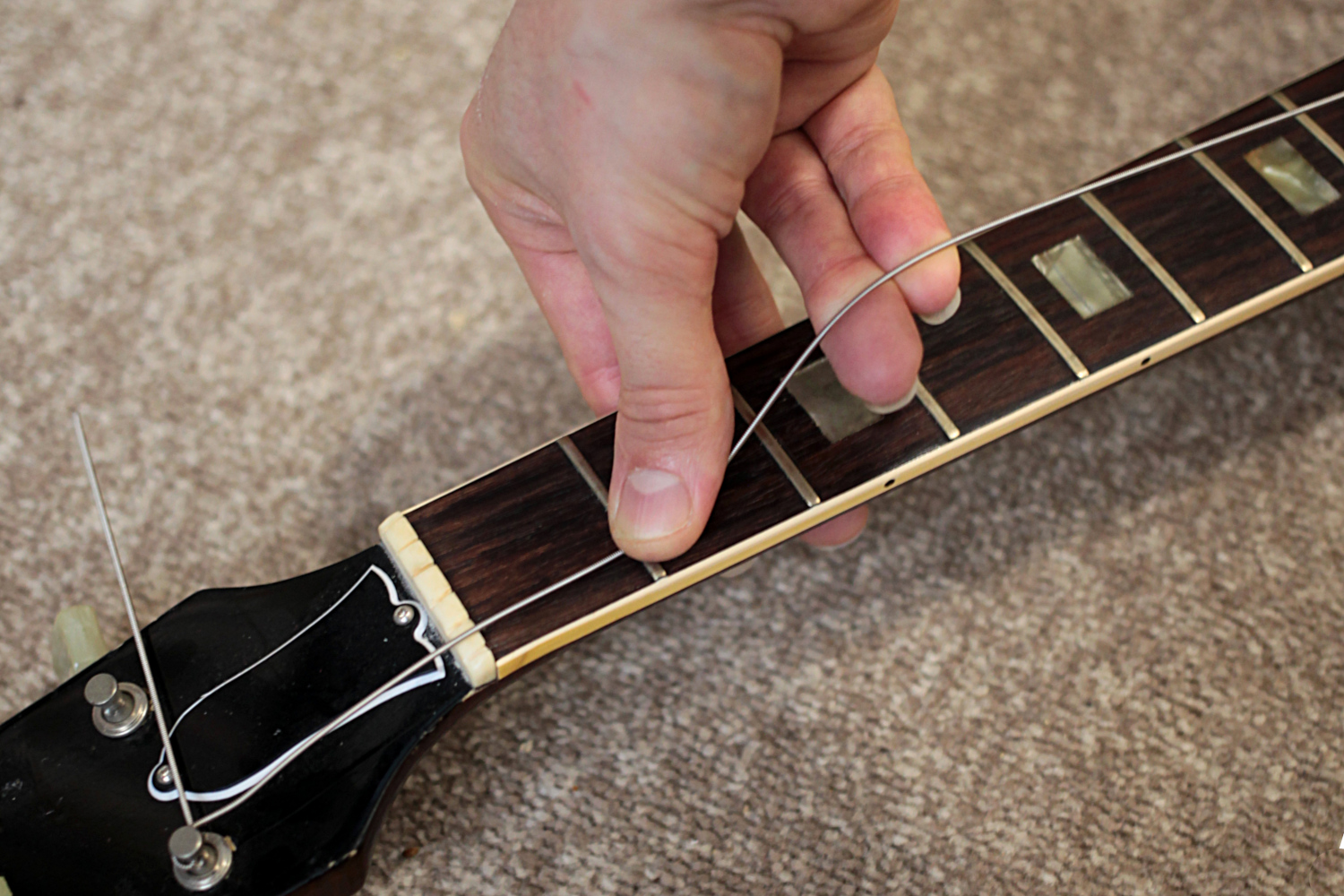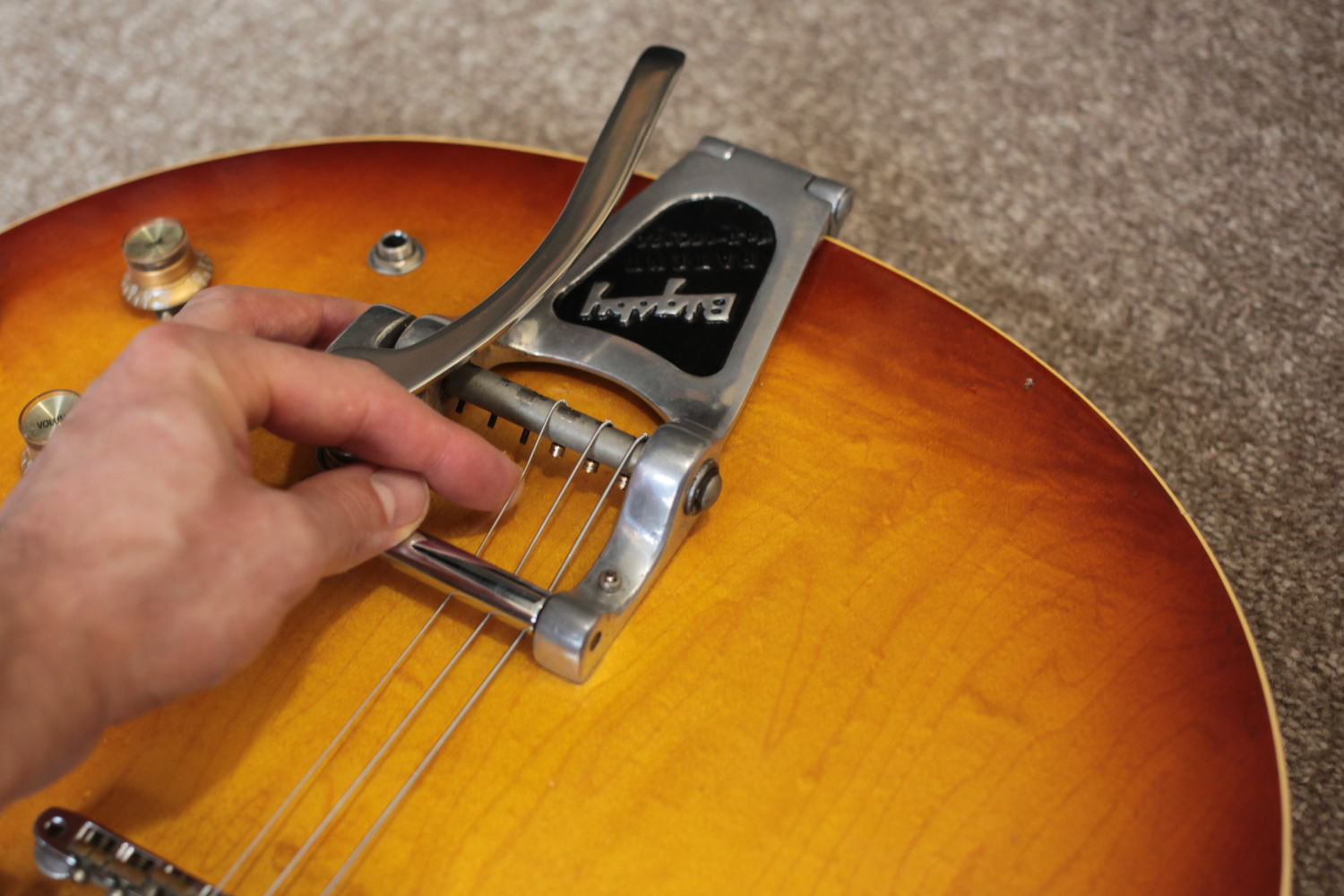Bigsbys! Tuning stability and the dreaded restring
If ever there were a vibrato system with a bad rep, it's the venerable Bigsby. They don't stay in tune, they don't have as much travel as a Strat and, the no 1 complaint, they're a nightmare to restring. If you're a regular to the shop, you probably already know we're a firmly pro-Bigsby establishment, so we thought we'd spend a few moments with you to unpick the myths and give you some tips.
Why Bigsbys go out of tune
Vintage style vibrato tailpieces are generally problematic in terms of tuning stability and Bigsbys more than many, so let's take a look at why.
The chief issue that you have with vibratos is that they change the tension of the string, which is generally fine if the string is fixed at its anchor points but problematic if not.
On a guitar with a Floyd Rose for example, the string is clamped firmly at the nut and the at the other end the strings are locked into the vibrato so the only part of the string that is effected by using the vibrato is the speaking length (ie the bit that vibrates when you pluck it): for this reason Floyds are extremely stable in terms of tuning even with far more extreme use than you can get out of a vintage style vibrato.
On a Bigsby, the string is effectively divided into three lengths– the speaking length between nut and saddle, the bit between the nut and tuner and the bit between the bridge and Bigsby – and they all change in tension when you use the vibrato. The problem is you also have points of friction at the nut and saddle, so if you lower the overall tension by pushing down on the Bigsby then release it so the tension goes back up, the string often binds at the points of friction so the tension is no longer equally divided between the three sections so the pitch of the speaking length of the string is then sharp or flat. Of course, as soon as we hear the note going sharp or flat we adjust it at the tuner, but then the string quickly settles down so that the tension is equal again, so the pitch goes out a second time.
Although that's the main issue, there are also problems with the way the spring works in Bigsbys. Essentially, the strings provide tension one way, the spring works in the other but there needs to be enough tension to bring the unit back to a neutral position and there often isn't.
So, you're telling me they're a bad design, right?
If guitars were cars, there's no question the Bigsby would have gone the way of chokes and cranks long ago. Still, we're a funny old bunch, us guitarists,and it has to be said Bigsbys have a wonderful and distinctive character. If you want to walk in the shoes of everone from Brian Setzer to Neil Young to Bernard Butler, the Bigsby has a musical quality that no other vibrato ever gets 100% the same. And, for all the moaning, there's a lot we can do to get these guitars playing in tune.
To be fair as well, Bigsbys were designed in the 1950s to work with 1950s strings: that means 12-54 and higher gauge, wound thirds, no string bending etc, and with that type of string they typically work fairly efficiently. Bigsby didn't expect people would be putting wimpy banjo strings on guitars with his vibrato on them, so let's give him a break here!
How do we fix it then?
The key to getting your Bigsby in tune is to get the string moving smoothly over the friction points. Much of this stuff is into guitar tech territory so if you're not confident bring it to a tech: we have a tech in store happy to help so any doubts get in touch.
Let's look at the nut first. A good nut should have slots that are deep enough to keep the string from popping out when you bend notes, but the string shouldn't be disappearing into slots the size of the Grand Canyon. If the slots are too deep, the top of the nut needs taking down. Secondly those slots need to be the right size for the string gauge you're using. It's not the end of the world if they're too wide, but too narrow and the slot will pinch the string and cause you tuning problems. Lastly, the slots need to be the right shape: lots of old style nut files cut a V shaped slot rather than a U shaped one, and that will mean the string gets dragged into the mouth of the V.
Much of that is not necessarily for anyone who's not comfortable tinkering with their guitars, but there's also a good practice anyone can do to improve the nut, which is to put a lubricant into the slots to help the string pass through them. Graphite from a pencil works very well, so literally just scribble on the slots and it will improve your tuning. If you're feeling posh there is a product called 'nut sauce' that works extremely well.
At the other end, much of the same comments about nuts apply to the saddles as well. Saddles should not have deep gauges in them, nor should they really have just a little V shaped nick. All of my Bigsby guitars get a few passes of the correct diameter nut file to ensure there's a U shaped notch that's just deep enough to stop the string skipping out of the socket.
Is that enough? Shouldn't I be fitting a roller bridge, locking tuners etc?
If you want to go further, there are various part changes at the bridge that make a difference.
A popular recommendation for Bigsby guitar is a roller bridge. These have a tiny wheel in place of a saddle which turns as the string is pulled back and forth, so they eliminate the friction point. In principal they're an ideal bridge solution to a Bigsby set up. However, they're not a particularly elegant looking device and if you have an otherwise vintage looking guitar, you might not be terribly keen on the look of a roller. Some people also feel they don't sound as good as a classic ABR style bridge, and there are plenty of cheap rollers out there where in practice the wheels don't actually turn very well so if you're going to get one get a quality one. My take on them would be if you like the look they're worth a try, particularly if they fit your existing studs so it's an easy experiment, but they're not necessary if you're not keen. This is a typical roller bridge:
A simpler swap is to get rid of those metal saddles in your existing bridge and replace them with something more slippery. In the early 60s so many Gibson models shipped with vibratos that Gibson decided to swap out the metal saddles in their ABRs for a hard nylon material that allowed easier string travel across them, and those nylon saddles are great for tuning stability. If you decide to try this on a modern guitar look for hard nylon as some of the modern versions are a lot softer than the originals. I've also have very good success with Graphtech's graphite saddles – I guess they take the pencil lead trick to its logical conclusion – and the the same company also make Tusq saddles which seem quite decent for tuning. This old ES355 has Graphtech saddles installed:
Locking tuners are often recommended and they do help a little, although it's important to understand when your Bigsby guitar goes out of tune you are not pulling the string through the hole on the tuner. What it does achieve is less windings around the tuner post, which is another point where string tension gets displaced if you're using a vibrato. Locking tuners are cool but don't expect them to transform your tuning issues – they're a belt and braces mod when it comes to tuning stability.
You said something about a spring!
Yes! So, the other big issue with Bigsbys is that it's really important the unit goes back to the same rest position every time. You can diagnose this easily: push down on the Bigsby, let go and see if it comes back to pitch, then do the same pulling upwards. Ideally, both times it should have returned to pitch. If not, there's an issue to look at.
With 50s style strings, this is rarely an issue and it tends to rear up primarily with modern 9s or 10s. If you prefer lighter strings we recommend using hybrid sets (9-46 if you regularly use 9-42 or 10-52 if you regularly use 10-46) to increase overall tension without being harder to bend the unwound strings, and this will help mitigate issues.
If you're settled on a gauge and still have issues, then the other option is to look at the spring. If you take it out, you may find there's a small white nylon washer underneath. If there isn't, putting a washer (or coin, button, poker chip or anything else that's lying around) under the spring will slightly increase the tension, although it will also raise the arm slightly. You can also substitute other springs – we find Bigsby springs are more consistent than unofficial springs bought from Ebay but they're not perfect and sometimes a better spring will fix things. There's also a taller offical spring (the standard one is 7/8”, and the tall one 1”), and Reverend and Duesenburg make replicas that have a spongier feel. Experimenting with springs is cheap and it can make a big difference, so we heartily recommend it.
Lastly there are other reasons than springs a Bigsby might not return to neutral when it should – these require a bit more engineering experience so we'll leave this as something to take for your tech to look at if nothing else is fixing the issue.
So what about restringing?
Bigbsys require a knack to restring. The first few times you do one it's fiddly, sure, but they get a lot easier. I've been restringing Bigsbys, often in a dark corner backstage after a couple of pints with the drummer flicking peanuts at me throughout, for 25 years so I can do them blindfold these days and still have it done in a few minutes.
Here's my technique:
Firstly, rotate the arm all the way backwards before you take the old strings off – it stops the spring falling out and limits the travel of the unit whilst you're fiddling with it.
Next, prebend the bit of the string next to the ball end. You want it to conform to the shape of the roller before you put it on the peg, otherwise it will ping off as soon as you take your finger off it. I just bend them around my little finger but you can use a pencil or something similar.
Once it's got a neat little U at the end, thread it through the front roller (assuming your guitar has one)and then thread the ball end onto the pin. Pull the string tight towards the neck, keeping your finger on the ball end so it doesn't come off.
Once you have the string pulled tight, that ball end will sit happily on the post, but it will fall off if you release the string tension so you need to do the headstock end without lessening the pull on the string. There's an easy way round this: get a capo, put it on somewhere in the middle of the neck and you now have both bands free to finish off the headstock end. Another trick some people like is to use a pencil rubber to trap the ball onto the peg. Here's the capo solution:
If you do a lot of Bigsby string changes you might want to get the hang of restringing without a capo, you can take care of the headstock end with one hand whilst keeping tension on the string with the other. I use my thumb and forefinger to trap the string and gradually feed tension onto the tuner.
Make sure you don't end up with too many winds around the tuner posts as it's not a good recipe for tuning stability. I aim one wind over, not more than two under on the wound strings and three under on the unwound ones.
Before bringing the string all the way up to pitch remember to check alignment at the Bigsby end - it's not just about looking neat, if the strings aren't running straight it adds to how long it'll take the tuning to settle.
Once you have the strings on and roughly up to pitch, give them a stretch (pull them gently but firmly upwards from the fingerboard a few times, then retune. I then have a warm up on the guitar being sure to give the Bigsby the heaviest abuse I can muster for a few minutes to help it settle.
That... doesn't sound as bad as I thought?
As with most things, there's nothing to be scared of with them, there's just a bit of a learning curve. Most of the anti-Bigsby sentiment stems from the days where information wasn't as easily shared as it is today and people simply didn't know how to get them working as they should, but that's not the case these days – a few simple tweaks, a couple of practice runs with restringing and you should be fully equipped to go forth and wiggle!


